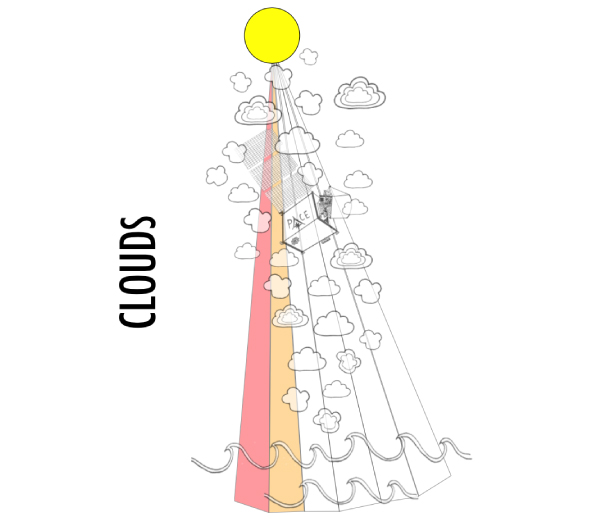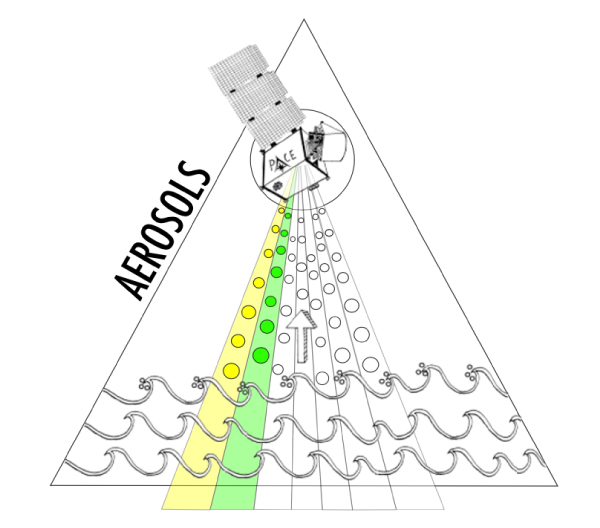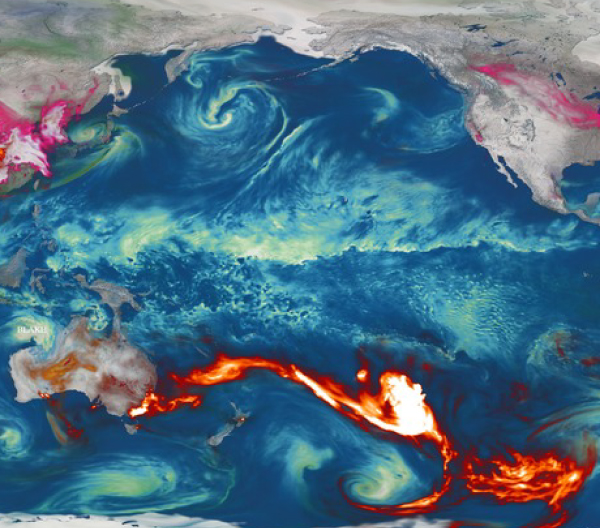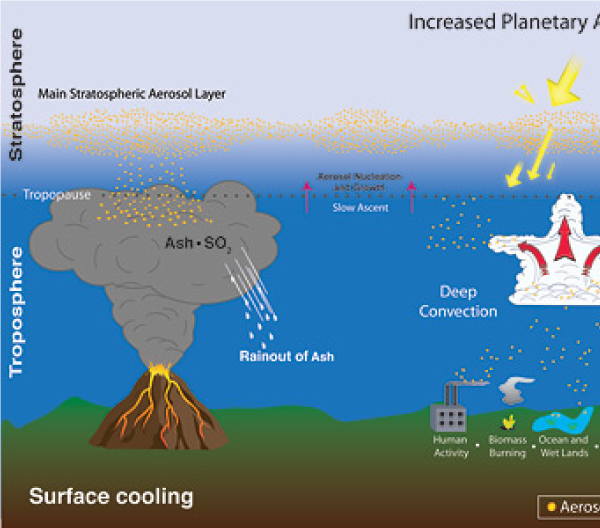Aerosols & Clouds

Clouds (masses of water drops or ice crystals suspended in the atmosphere) and aerosols (tiny, airborne solid and liquid particles) play important roles in earth's climate and interact with each other, and the ocean, in complex ways.
Clouds are the key regulator of Earth's average temperature. Some clouds contribute to cooling because they reflect solar energy or shortwave radiation back to space. Other clouds contribute to warming because they trap some of the energy the Earth emits. PACE will provide estimates of cloud properties (cover, height, phase, brightness, and droplet size) that are essential for climate model assessment.
Aerosols can be found in the air over oceans, deserts, mountains, forests, ice, and every ecosystem in between. They drift in Earth's atmosphere from the stratosphere to the surface and range in size from a few nanometers to several tens of micrometers. One of the PACE polarimeters will be focused on characterizing aerosols in the atmosphere.
Learn more in the resources listed below about how PACE will explore clouds and aerosols, as well as use these data to help make better estimates of what is going on in the ocean.
















